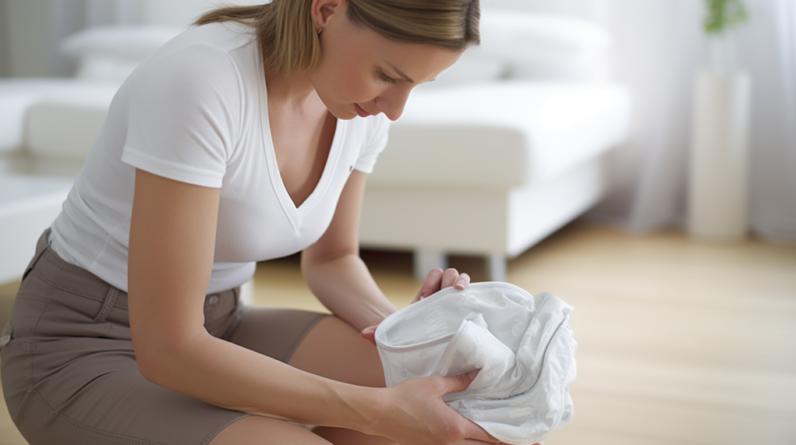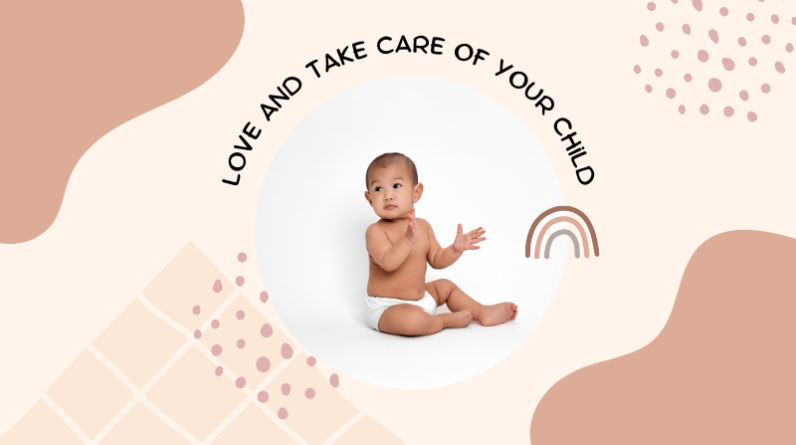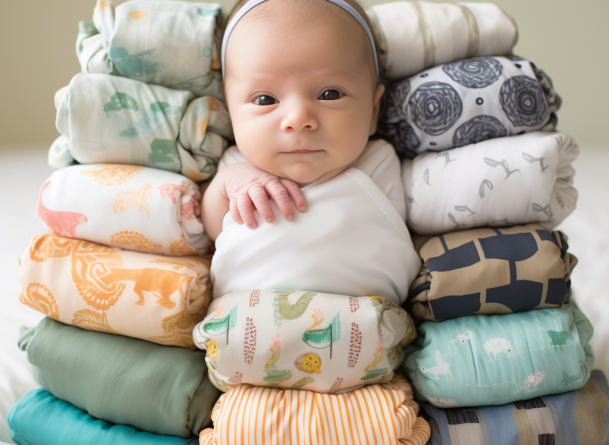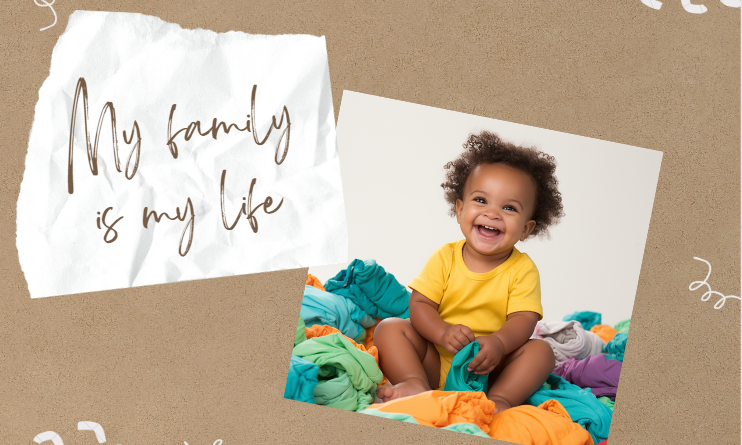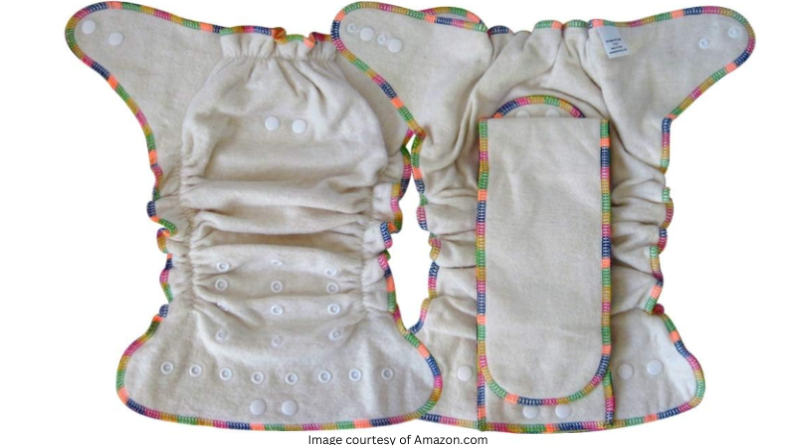
Cloth diapering has gained popularity among parents due to its numerous benefits for both the baby and the environment. In this article, we will explore the benefits of cloth diapering, with a specific focus on overnight cloth diapers. We will discuss the importance of choosing the right overnight cloth diaper to ensure your baby’s comfort and dryness throughout the night.
Brief Explanation of Cloth Diapering and Its Benefits
Cloth diapering involves using reusable diapers made of fabric instead of disposable diapers. This practice has several advantages:
- Economic Benefits: Cloth diapers can be a cost-effective option in the long run. While the initial investment may be higher, as you need to purchase the diapers and accessories, the ongoing cost is significantly lower compared to buying disposable diapers regularly.
- Environmental Benefits: Disposable diapers contribute to landfill waste and take hundreds of years to decompose. Cloth diapers, on the other hand, are reusable and can prevent thousands of diapers from ending up in landfills.
- Reduced Chemical Exposure: Cloth diapers eliminate the need for the chemicals often found in disposable diapers, such as fragrances and dyes. This can reduce the risk of skin irritations and allergies.
- Better for Baby’s Skin: Cloth diapers are typically made of soft and breathable materials, which can help prevent diaper rash and keep your baby’s skin healthier.
- Earlier Potty Training: Some studies suggest that cloth diapered babies may potty train earlier than those using disposable diapers. This is because cloth diapers allow babies to feel the wetness more effectively, encouraging them to recognize when they need to use the toilet.
Overview of the Specific Focus on Overnight Cloth Diapers
Overnight cloth diapers are specifically designed to provide extra absorbency and leak protection during longer stretches of sleep, such as overnight. They are constructed to keep your baby dry and comfortable throughout the night, reducing the chances of leakage and discomfort that could disrupt their sleep.
The main features of overnight cloth diapers include:
- Higher Absorbency: Overnight cloth diapers often have multiple absorbent layers or inserts made from highly absorbent materials, such as bamboo, hemp, or microfiber. These materials can hold a larger volume of urine, ensuring that your baby stays dry for longer periods.
- Boosting Inserts: Some overnight cloth diapers come with additional boosting inserts that can be added for extra absorbency. These inserts can be customized based on your baby’s needs, allowing you to adjust the diaper’s absorbency level.
- Stay-Dry Liners: To keep your baby’s skin dry and prevent diaper rash, some overnight cloth diapers have a stay-dry lining. This lining wicks moisture away from your baby’s skin, providing a dry and comfortable feel throughout the night.
Importance of Choosing the Right Overnight Cloth Diaper for Your Baby’s Comfort and Dryness
Choosing the right overnight cloth diaper is crucial for ensuring your baby’s comfort and dryness during sleep. Here are some factors to consider:
- Absorbency: Look for diapers with high absorbency to handle your baby’s overnight urine output. Consider the diaper’s materials, number of layers, and boosting options to find one that suits your baby’s needs.
- Fit and Size: A proper fit is essential to prevent leaks. Make sure the diaper has adjustable snaps or hook-and-loop closures to achieve a snug fit around your baby’s waist and legs. Additionally, choose a size appropriate for your baby’s weight and age.
- Breathability: Opt for overnight cloth diapers that allow airflow to keep your baby’s skin dry and reduce the risk of diaper rash. Diapers with breathable outer layers and natural fiber inserts promote better air circulation.
- Ease of Use and Washing: Consider the convenience of using and washing the overnight cloth diapers. Look for diapers that are easy to put on and take off, and consider whether they are compatible with your washing routine.
- Reviews and Recommendations: Read reviews from other parents and seek recommendations from trusted sources to gather insights about different brands and models of overnight cloth diapers. This can help you make an informed decision based on the experiences of others.
Remember, every baby is unique, and it may take some trial and error to find the right overnight cloth diaper that works best for your little one. Regularly check your baby’s diaper during the night to ensure it is absorbing well and adjust the diapering routine as needed.
Understanding Overnight Cloth Diapers
Definition and Purpose of Overnight Cloth Diapers
Overnight cloth diapers are specifically designed to provide extended protection and absorbency for babies during nighttime sleep. They are intended to handle larger volumes of urine that can occur during extended periods of sleep, minimizing leaks and ensuring the baby remains comfortable and dry throughout the night. These diapers are typically constructed with features that enhance their absorbency and leak resistance, allowing parents to confidently use cloth diapers even during overnight hours.
Key Features to Look for in Overnight Cloth Diapers
When selecting overnight cloth diapers, there are several key features to consider to ensure optimal performance and effectiveness:
- Absorbency: The primary feature to prioritize in overnight cloth diapers is high absorbency. Overnight diapers should be able to hold a significant amount of liquid to prevent leaks and discomfort. Look for diapers with multiple absorbent layers or inserts, as well as materials known for their absorbent properties such as bamboo, hemp, or microfiber. Some diapers also offer the option to add boosting inserts for additional absorbency when needed.
- Material: The choice of fabric for overnight cloth diapers can greatly impact their performance. Natural fibers like cotton, bamboo, and hemp are commonly used due to their excellent absorbency and breathability. Cotton is soft and durable, bamboo is highly absorbent and antimicrobial, and hemp is known for its superior absorbency and sustainability. Synthetic materials like microfiber can also provide high absorbency, but they may not be as breathable as natural fibers.
- Fit and Sizing: Proper fit is essential to prevent leaks, especially during the night when babies tend to move around more. Look for overnight cloth diapers that offer adjustable sizing options such as snaps or hook-and-loop closures. This allows you to customize the fit around your baby’s waist and legs, ensuring a snug yet comfortable fit. Consider the weight and age recommendations for each diaper size to ensure an appropriate fit.
- Fastening Options: Overnight cloth diapers come with different closure systems, each with its own advantages. Snaps are durable and offer a secure fit, while hook-and-loop closures (such as Velcro) are adjustable and convenient for quick diaper changes. Consider your preference and your baby’s activity level when choosing a closure system.
- Additional Features: Some overnight cloth diapers may come with extra features to enhance their performance. Stay-dry liners, for example, have a moisture-wicking layer that keeps your baby’s skin dry and comfortable throughout the night. This can be beneficial for babies with sensitive skin or prone to diaper rash. Boosters or additional inserts are designed to increase absorbency, allowing you to customize the diaper’s absorbency level based on your baby’s needs.
It’s important to note that every baby is different, and what works for one may not work for another. It may be helpful to try out different brands and styles of overnight cloth diapers to determine which ones best suit your baby’s needs.
Research suggests that using cloth diapers overnight can be an effective option. A study published in the journal Pediatrics found that there were no significant differences in diaper rash rates between infants using disposable diapers or cloth diapers, including overnight use. However, it’s crucial to choose high-quality and appropriately absorbent overnight cloth diapers to minimize the risk of leaks and ensure your baby’s comfort during sleep.
Remember to follow the manufacturer’s instructions for proper care and washing of overnight cloth diapers to maintain their absorbency and longevity.
Popular Brands of Overnight Cloth Diapers:
- Thirsties
- GroVia
- Smart Bottoms
- Sustainablebabyish/Sloomb
- Imagine Baby
- Charlie Banana
- Happy BeeHinds
- Ecoable
- Rearz
- Sweet Pea Diapers
- Kanga Care
- Mother-ease
Types of Overnight Cloth Diapers
When it comes to overnight cloth diapers, there are various types available, each with its own features, pros, and cons. Understanding these different types can help you make an informed decision based on your baby’s needs and your personal preferences.
All-in-One (AIO) Diapers
Features: All-in-One diapers are designed with simplicity in mind. They consist of a waterproof outer layer and an absorbent inner layer sewn together, forming one complete diaper. Some AIO diapers have additional features, such as pocket openings to allow for additional inserts for increased absorbency.
Pros:
- Convenient and easy to use, as they require no additional steps or assembly.
- All-in-One diapers are similar to disposable diapers in terms of convenience and quick changes.
- The all-in-one design makes them suitable for caregivers who may be less familiar with cloth diapers.
Cons:
- They may have longer drying times due to the sewn-in absorbent layers.
- Some AIO diapers may have limited customization options in terms of absorbency levels.
- Depending on the brand and design, AIO diapers can be more expensive compared to other types of cloth diapers.
Pocket Diapers
Features: Pocket diapers consist of a waterproof outer shell and a moisture-wicking inner layer with a pocket opening. The pocket allows you to insert absorbent inserts or boosters according to your baby’s needs.
Pros:
- Customizable absorbency by adjusting the number and type of inserts.
- Faster drying times compared to all-in-one diapers, as the inserts can be removed for separate washing and drying.
- Pocket diapers often offer a trimmer fit, making them suitable for babies who require a snug diaper.
Cons:
- Additional step of stuffing inserts into the pocket, which can be time-consuming.
- Potential for leaks if the inserts are not properly positioned or if the pocket opening is not sealed correctly.
- May require additional cost for purchasing inserts.
Fitted Diapers
Features: Fitted diapers are made entirely of absorbent material and have elasticized waist and leg openings. They require a separate waterproof cover to make them leak-proof.
Pros:
- Excellent absorbency due to the entire diaper being made of absorbent material.
- Adjustable sizing options for a snug and comfortable fit.
- Fitted diapers are suitable for heavy wetters or babies who require extra absorbency.
Cons:
- They require a separate waterproof cover, adding an extra step during diaper changes.
- Fitted diapers alone are not waterproof, making the additional cover essential to prevent leaks.
- Longer drying times due to the thicker, all-absorbent material.
Prefold Diapers
Features: Prefold diapers are rectangular, multi-layered diapers that require folding and securing with fasteners or pins. They can be paired with a waterproof cover for leak protection.
Pros:
- Versatile and cost-effective, as prefolds can be used in various ways (e.g., as inserts, burp cloths, or changing pads).
- Dries faster compared to fitted diapers, as the multiple layers can be unfolded for quicker air circulation.
- Prefolds can be adjusted to fit newborns, infants, and toddlers by folding and securing them differently.
Cons:
- Additional steps of folding and securing may be less convenient for caregivers who prefer a simpler diapering process.
- Requires separate waterproof cover for leak protection.
- May require some practice to achieve a secure and snug fit.
Hybrid Diapers
Features: Hybrid diapers combine reusable cloth inserts with a disposable insert option. The reusable cloth inserts can be washed and reused, while the disposable inserts can be used when convenience is preferred, such as during travel or when a washing routine is temporarily disrupted.
Pros:
- Flexibility to choose between reusable and disposable inserts based on convenience or specific situations.
- Some hybrid diaper systems offer biodegradable or compostable disposable inserts, providing an eco-friendly option.
- The reusable cloth inserts offer the cost-saving and environmental benefits of cloth diapering.
Cons:
- Additional cost associated with purchasing disposable inserts.
- Depending on the brand and design, the disposable inserts may not be as absorbent as other cloth diaper options.
- Hybrid diapers may require separate washing and care instructions for the cloth and disposable inserts.
Wool Covers
Benefits: Wool covers are not diapers themselves but are used as a waterproof layer over fitted, prefold, or flat diapers. They are made from natural wool fibers, such as merino wool, and are highly breathable and moisture-wicking.
Benefits:
- Excellent breathability, allowing for proper air circulation and reducing the risk of diaper rash.
- Wool covers have natural antibacterial properties, reducing the need for frequent washing.
- They are highly absorbent and can absorb a small amount of moisture without feeling wet.
Care Instructions:
- Wool covers require special care and washing methods, such as lanolizing (treating with lanolin) to maintain their waterproofing properties.
- They generally need less frequent washing compared to other diaper options, as wool has self-cleaning properties.
- Wool covers can be air-dried and do not require machine drying.
Remember to consider your baby’s unique needs, your lifestyle, and personal preferences when choosing the type of overnight cloth diapers that will work best for you. It can be helpful to try out different types and brands to find the one that fits your baby comfortably and offers the desired level of absorbency and convenience.
Tips for Choosing the Right Overnight Cloth Diaper
When selecting an overnight cloth diaper for your baby, it’s important to consider several factors to ensure the best fit, comfort, and absorbency. Here are some tips to help you make the right choice:
Consider Your Baby’s Needs: Age, Size, and Sleeping Habits
- Age and Size: Take into account your baby’s age and size when choosing an overnight cloth diaper. Diapers are typically sized based on weight ranges, so ensure that you select a diaper size that corresponds to your baby’s weight to ensure a proper fit.
- Sleeping Habits: Consider your baby’s sleeping habits. If your baby is a heavy wetter or sleeps for longer periods, you may need a diaper with higher absorbency. Assess whether your baby tends to sleep on their back, stomach, or side, as this can affect how the diaper fits and functions during the night.
Research and Read Reviews
- Brand and Model: Conduct research and read reviews on different brands and models of overnight cloth diapers. Look for reliable sources such as parenting forums, cloth diapering websites, and product review websites to gather insights and feedback from other parents who have used these diapers.
- Absorbency and Leak Protection: Pay close attention to reviews that discuss absorbency and leak protection. Consider the experiences of parents with babies of similar age and sleeping habits to determine if the diaper you’re considering will provide sufficient absorbency throughout the night.
Assess Your Budget
- Upfront Costs vs. Long-Term Savings: Evaluate your budget and compare the upfront costs of purchasing overnight cloth diapers with the potential long-term savings. While cloth diapers have an initial investment, they can lead to significant savings over time compared to disposable diapers.
- Consider Quality and Durability: Keep in mind that investing in higher-quality overnight cloth diapers can often yield better performance and durability, which can save you money in the long run. Cheaper diapers may wear out quickly or not provide adequate absorbency, leading to the need for more frequent replacements.
Consult with Experienced Cloth Diaper Users
- Seek Advice from Other Parents: Reach out to experienced cloth diaper users, such as family members, friends, or online communities, to seek their advice and recommendations. They can provide valuable insights based on their own experiences with different brands and models of overnight cloth diapers.
- Join Cloth Diapering Communities: Join online forums or social media groups dedicated to cloth diapering. These communities often have experienced parents who are willing to share their knowledge and help answer any specific questions you may have.
Take Advantage of Trial Options
- Rental or Trial Programs: Some cloth diaper companies offer rental or trial programs, allowing you to test out different brands and styles before committing to a purchase. This can be a helpful way to determine which overnight cloth diaper works best for your baby without investing in a full set initially.
- Secondhand Diapers: Consider purchasing secondhand overnight cloth diapers from trusted sources. This can provide an affordable way to try out different brands and models, and it also promotes sustainability by extending the life of cloth diapers.
Remember that every baby is unique, and what works well for one baby may not work as effectively for another. It may require some experimentation and adjustments to find the right overnight cloth diaper that meets your baby’s specific needs and provides optimal comfort and dryness during sleep.
Care and Maintenance of Overnight Cloth Diapers
Taking proper care of your overnight cloth diapers is essential to ensure their longevity, maintain their absorbency, and keep them clean and hygienic for your baby. Here are some guidelines and tips for the care and maintenance of overnight cloth diapers:
Prepping New Diapers: Instructions for Initial Washing
When you receive new overnight cloth diapers, it’s important to follow the manufacturer’s instructions for prepping, which typically involves an initial wash to remove any residues and increase the absorbency of the diapers. Here’s a general process for prepping new diapers:
- Check Manufacturer Instructions: Read and follow the specific prepping instructions provided by the diaper manufacturer. Different materials and brands may have slightly different recommendations.
- Prewash: Start by doing a prewash cycle with a small amount of detergent to remove any manufacturing residues. This can typically be done with other laundry items.
- Main Wash: Follow the prewash with a regular main wash using an appropriate amount of detergent based on your water hardness and the diaper load size. Consult the detergent manufacturer’s guidelines for proper usage.
- Drying: Dry the diapers according to the recommended drying method for the specific material (discussed in the next section). Once prepped, the diapers are ready for use.
Washing Routine: Step-by-Step Guide to Washing Cloth Diapers
Establishing a consistent washing routine is crucial for keeping overnight cloth diapers clean, odor-free, and in optimal condition. Here’s a general step-by-step guide for washing cloth diapers:
- Pre-rinse: Start by doing a pre-rinse cycle with cold water to remove any solid waste and excess urine from the diapers.
- Main Wash: Follow the pre-rinse with a main wash cycle using warm water and an appropriate amount of detergent. Ensure that you use a detergent suitable for cloth diapers and free from additives like fabric softeners or bleach.
- Extra Rinse: To ensure all detergent residue is removed, do an extra rinse cycle using cold water.
- Drying: Choose the drying method that works best for you (discussed in the next section).
Drying Options: Air-Drying vs. Machine-Drying Considerations
Deciding between air-drying and machine-drying your overnight cloth diapers depends on factors such as convenience, climate, and the diaper material. Here are considerations for each drying method:
- Air-Drying:
-
- Benefits: Air-drying is gentle on the diapers, helping to preserve their elastic and fabric integrity. It is also an energy-efficient and environmentally friendly option.
- Tips: Hang the diapers in a well-ventilated area, preferably outdoors or in a dedicated drying space. Ensure that the diapers are completely dry before storing to prevent mildew or odors.
- Machine-Drying:
- Benefits: Machine-drying is generally faster and more convenient than air-drying. It can also help fluff up certain diaper materials, such as microfiber or bamboo.
- Tips: Use a low heat setting to avoid damaging elastic or delaminating waterproof layers. Avoid using dryer sheets or fabric softeners, as they can reduce absorbency.
Consider a combination of both drying methods. Air-drying the diapers initially and then machine-drying them briefly to finish the drying process can help reduce drying time while maintaining the integrity of the diapers.
Stain Removal: Tips and Tricks for Tackling Stains Effectively
Over time, cloth diapers may develop stains from diaper cream, food, or other substances. Here are some tips for effective stain removal:
- Sun Bleaching: Place clean, wet diapers in direct sunlight, as the sun’s UV rays can naturally bleach and remove stains. This method is particularly effective for removing stains on white or light-colored diapers.
- Stain Treatments: Use stain treatment methods such as applying lemon juice, hydrogen peroxide, or a mild stain remover specifically designed for cloth diapers. Test any stain treatment method on a small, inconspicuous area of the diaper before applying it to the stain.
- Routine Maintenance: Regularly sunning your diapers and addressing stains promptly can help prevent them from setting in. Following a proper washing routine and using an appropriate amount of detergent can also aid in stain prevention.
Storage: How to Store Cloth Diapers Between Uses
Proper storage of overnight cloth diapers between uses helps maintain their freshness and prevent odor buildup. Here are some storage tips:
- Dry Pail: Store dirty diapers in a dry pail or wet bag with a breathable mesh lining to allow air circulation and prevent the growth of bacteria. Ensure that the pail or bag has a tight-fitting lid to contain odors.
- Diaper Liners: Consider using diaper liners, such as disposable or reusable liners, to help contain solid waste and make diaper changes easier. Liners can be removed and discarded or flushed, reducing the amount of waste to be stored.
- Washing Frequency: Determine a washing frequency that works for you, considering the number of diapers you have in your rotation, the level of soiling, and your access to laundry facilities. Washing every 1-3 days is a common recommendation.
By following these care and maintenance tips, you can ensure that your overnight cloth diapers remain clean, absorbent, and in excellent condition for your baby’s use. Always refer to the specific care instructions provided by the diaper manufacturer for the best results.
Troubleshooting Common Issues
Even with the best care and maintenance, you may encounter some common issues when using overnight cloth diapers. Here are some troubleshooting tips to help address these concerns:
Leaking: Addressing Potential Causes and Solutions
- Diaper Fit: Ensure that the diaper is properly fitted to your baby. Adjust the waist and leg openings to create a snug fit without being too tight. Check that the diaper covers the entire diaper area adequately.
- Absorbency: Evaluate the absorbency of your overnight cloth diaper. Consider using additional inserts or boosters to increase the diaper’s absorbency. Some materials, like hemp or bamboo, offer higher absorbency than others.
- Diaper Condition: Inspect the diaper for any signs of wear or damage. Worn-out elastics, delamination, or compression of the absorbent layers can compromise the diaper’s performance. Replace or repair diapers as needed.
- Stripping: If you notice reduced absorbency, you may need to strip your diapers. Stripping involves deep-cleaning the diapers to remove buildup from detergent residues or hard water minerals. Follow specific stripping instructions provided by the diaper manufacturer or reputable cloth diapering resources.
Rash Prevention: Tips for Avoiding Diaper Rash During Overnight Use
- Change Diapers Regularly: Ensure that you change your baby’s overnight cloth diapers promptly when they are wet or soiled. Even with higher absorbency, extended exposure to moisture can increase the risk of diaper rash.
- Use a Diaper Liner: Consider using a stay-dry liner made of fleece or a moisture-wicking material. These liners create a dry layer between the diaper and your baby’s skin, reducing the risk of moisture-related rashes.
- Choose Diaper Creams Wisely: If you use diaper creams, opt for cloth diaper-safe options that are free from petroleum, zinc oxide, or other ingredients that can leave residues on cloth diapers. These residues can hinder absorbency and cause repelling issues.
- Allow Air Circulation: During diaper changes, give your baby’s skin some time to breathe. Let your baby go diaper-free for a short period to allow air to circulate around the diaper area.
Nighttime Comfort: Strategies for Ensuring Your Baby Sleeps Soundly
- Temperature Regulation: Ensure that your baby is dressed appropriately for the ambient room temperature. Overheating can lead to discomfort and excessive sweating, potentially affecting the absorbency of the diaper.
- Diaper Material: Consider using breathable diaper materials, such as natural fibers like cotton or bamboo, that allow for better air circulation and reduce the risk of overheating or discomfort.
- Layering: Use additional inserts or boosters if needed to enhance the diaper’s absorbency without compromising fit and comfort. Ensure that the diaper remains properly fitted to avoid leaks.
- Bedtime Routine: Establish a consistent bedtime routine that includes a diaper change shortly before bedtime. This helps ensure your baby starts the night with a fresh, dry diaper.
Dealing with Ammonia Buildup: Information on Preventing and Treating Ammonia Odors
- Proper Washing Routine: Ammonia odors can occur due to insufficient detergent or inadequate rinsing. Review your washing routine to ensure you are using an appropriate amount of detergent and providing adequate rinsing cycles.
- Water Hardness: Hard water can contribute to ammonia buildup. If you have hard water, consider adding a water softener or using a water softening agent during the wash cycle. Alternatively, you can explore using detergents specifically formulated for hard water.
- Stripping: If ammonia odors persist, you may need to strip your diapers to remove the buildup. Follow specific stripping instructions provided by the diaper manufacturer or reputable cloth diapering resources.
- Ammonia Neutralizing Products: Some cloth diaper-safe laundry additives or boosters contain ammonia-neutralizing ingredients, such as baking soda or vinegar. These products can help eliminate ammonia odors and restore freshness to your diapers.
Remember, troubleshooting common issues with overnight cloth diapers may require some trial and error. Each baby is unique, and finding the right combination of fit, absorbency, and care routine may take some time. Consult with experienced cloth diaper users or seek advice from reputable cloth diapering communities for additional support and guidance.
Additional Considerations
When it comes to overnight cloth diapering, there are several additional factors and considerations to keep in mind. Let’s delve into each of these areas in more detail:
Nighttime Diaper Accessories: Recommendations for Diaper Liners, Doublers, or Boosters
- Diaper Liners: Consider using diaper liners, such as disposable or reusable liners, to make cleanup easier and help prevent stains. Liners create a barrier between the diaper and your baby’s skin, making it easier to dispose of solid waste.
- Doublers and Boosters: Doublers and boosters are additional absorbent layers that can be added to your overnight cloth diapers to enhance their absorbency. They are especially useful for heavy wetters or for extending the diaper’s capacity throughout the night. Look for materials like hemp or bamboo, which offer high absorbency.
- Stay-Dry Liners: If your baby is sensitive to wetness, using a stay-dry liner made of fleece or microfleece can provide a dry feeling against their skin. These liners wick away moisture and help keep your baby comfortable during the night.
Nighttime Diaper Covers: Exploring the Benefits of Different Cover Options
- PUL Covers: Polyurethane laminate (PUL) covers are a popular choice for overnight cloth diapering. They are waterproof and help contain leaks, providing an extra layer of protection. PUL covers come in various sizes, styles, and designs to suit your preferences.
- Wool Covers: Wool covers are breathable, naturally moisture-wicking, and provide excellent temperature regulation. They are a great option for overnight use as they are highly absorbent and can prevent leaks. Additionally, wool has natural antimicrobial properties, which can help reduce the risk of diaper rash.
- Fleece Covers: Fleece covers are made from synthetic materials that repel moisture and provide a breathable barrier. They are a budget-friendly option and offer good leak protection. Fleece covers can also provide a stay-dry effect, keeping your baby’s skin dry and comfortable.
Sustainability and Environmental Impact: Highlighting the Eco-Friendly Nature of Cloth Diapers
- Reduced Waste: Cloth diapers significantly reduce waste compared to disposable diapers, which take hundreds of years to decompose. By choosing cloth diapers, you contribute to a more sustainable future by reducing landfill waste.
- Water and Energy Usage: While cloth diapers require water and energy for washing, studies have shown that the environmental impact of cloth diapers is lower than that of disposables. Choosing energy-efficient washing machines, line-drying, and using eco-friendly detergents can further minimize the environmental footprint.
- Reusable and Versatile: Cloth diapers can be reused for multiple children or repurposed as cleaning rags once your baby has outgrown them. This versatility extends their lifespan and reduces waste even further.
- Natural Materials: Many cloth diapers are made from natural materials, such as cotton, bamboo, or hemp, which are renewable and biodegradable. These materials are often grown using sustainable farming practices.
Traveling with Overnight Cloth Diapers: Tips for Maintaining Your Routine on the Go
- Preparation: Pack enough clean diapers and accessories for the duration of your trip. Consider the number of diaper changes your baby typically requires during that time and add a few extra for unexpected situations.
- Wet Bags: Bring along wet bags or waterproof bags to store dirty diapers while you’re on the go. This helps contain odors and prevents leakage until you can wash them.
- Laundry Facilities: Research your destination beforehand to identify laundry facilities available to you. If staying with friends or family, check if they have laundry facilities you can use. If not, look for local laundromats or consider hand-washing diapers if necessary.
- Disposable Options: In situations where cloth diapering may be challenging, you can opt for eco-friendly disposable diaper inserts or diapers specifically designed for travel. These options provide convenience while still minimizing environmental impact compared to traditional disposable diapers.
Remember, overnight cloth diapering while traveling may require some adjustments, but with proper planning and preparation, you can maintain your cloth diapering routine successfully.
By considering these additional aspects of overnight cloth diapering, you can enhance your baby’s comfort, reduce environmental impact, and navigate different situations with ease.
Conclusion
Cloth diapering, especially overnight cloth diapering, offers numerous benefits for both your baby and the environment. Let’s recap the importance of overnight cloth diapers, encourage exploration of options, and highlight the overall benefits of cloth diapering.
Recap of the Importance of Overnight Cloth Diapers for a Peaceful Night’s Sleep
Overnight cloth diapers play a crucial role in providing your baby with a comfortable and peaceful night’s sleep. With their high absorbency and leak prevention features, these diapers ensure that your little one stays dry throughout the night, reducing discomfort and promoting better sleep quality. By choosing the right overnight cloth diaper, you can minimize leaks, prevent rashes, and keep your baby content and cozy during the night.
Encouragement to Explore the Options and Find the Perfect Overnight Cloth Diaper
When it comes to overnight cloth diapers, there is a wide range of options available to suit different needs and preferences. From all-in-one diapers to pocket diapers, fitted diapers to hybrid diapers, and various cover options like PUL, wool, or fleece, it’s essential to explore and experiment with different brands, styles, and materials. Every baby is unique, so finding the perfect overnight cloth diaper may require some trial and error. By researching, reading reviews, and seeking advice from experienced cloth diaper users, you can find the ideal diaper that provides the best fit, comfort, and absorbency for your baby’s specific needs.
Final Thoughts on the Benefits of Cloth Diapering for Your Baby, Your Wallet, and the Planet
Choosing cloth diapers, including overnight cloth diapers, offers a multitude of benefits beyond just a peaceful night’s sleep. Cloth diapering is a sustainable and environmentally friendly choice that significantly reduces waste compared to disposable diapers. By using cloth diapers, you contribute to the preservation of our planet for future generations. Additionally, cloth diapers can save you money in the long run, as they are reusable, can be used for multiple children, and can be repurposed even after your baby has outgrown them. Furthermore, cloth diapers made from natural materials provide a healthier and chemical-free option for your baby’s delicate skin.
In conclusion, overnight cloth diapers are a worthwhile investment that provides comfort, leak protection, and a better night’s sleep for your baby. By exploring the various options, considering your baby’s needs, and following proper care and maintenance routines, you can experience the many benefits of cloth diapering. Embrace the journey of cloth diapering, knowing that you are making a positive impact on your baby’s well-being, your wallet, and the environment.


